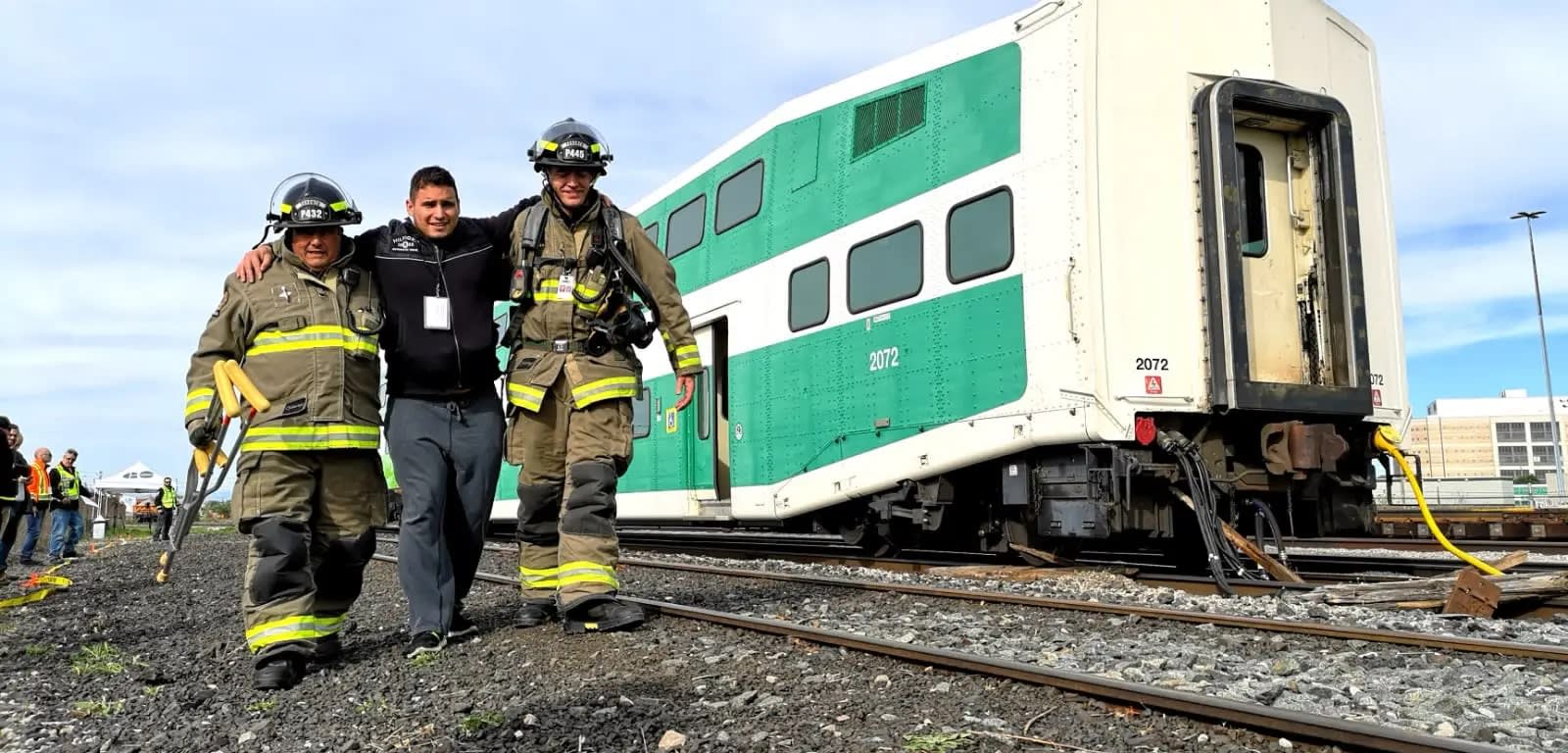Metrolinx holds disaster exercise to prepare for worst-case
More than 300 actors, emergency responders and Metrolinx staff take part in a mock collision
Sep 22, 2018
A GO Train coach sits smoking just outside of Richmond Hill after being struck by a large truck. It’s a derailment. The coach’s wheels are off the tracks, its windows are shattered and all 150 on board are shaken, scared and some badly injured.
A troubling headline for sure, but in this case, it’s not real.
About 300 actors, Metrolinx staff and emergency responders took part in a mock train derailment Saturday in Etobicoke, next to the Willowbrook Rail Maintenance facility.
“It is our biggest exercise of this nature that we’ve ever conducted,” said Metrolinx President & CEO Phil Verster. “We never want to be here, but because safety is our ultimate responsibility and our biggest commitment to our travelling public, it is exceedingly important we prepare ourselves for what the worst-case scenario could be.”
Emergency officials take part in a past Metrolinx mock disaster. The next will be at the new Union Station Bus Terminal. (Metrolinx photo)
Actors portraying injured passengers during a past GO Transit emergency collision exercise. The next one will be help this Sunday, at the new Union Station Bus Terminal. (Metrolinx photo)
Toronto Fire and EMS assist actors portraying injured passengers during GO Transit emergency collision exercise Saturday, Sept. 22
Actors portraying injured passengers during GO Transit emergency collision exercise Saturday, Sept. 22
About 30 minutes into the exercise, fire crews started evacuating the injured from the train. Many were dazed, some were moaning. One man with an obvious head wound called out over and over again, panicked, asking where his father was.
New Metrolinx employee Nasir Butt’s day job is a logistics coordinator in the Transit Safety division but, during the exercise, he played Victim Number 10. A man who was riding in the lower level of the impacted coach who had to be evacuated after going into shock with an amputated finger. His right hand was covered in fake blood to make the exercise feel as real as possible.
“It actually took a lot of energy to act like you’re in shock,” Butt said. “I’ve been in shock before. I’ve been injured in the past and because of that I had an idea of what it’s like to be in shock.”
Exercise Collision Course served as the kick off of Operation Lifesaver’s National Rail Safety week. The week helps to raise awareness of the danger of trespassing on railway property or disobeying railway-crossing signals.
The exercise allowed Metrolinx to assess its response capabilities, both from an operations and communications perspective.
Metrolinx President & CEO Phil Verster attending GO Transit emergency collision exercise Saturday, Sept. 22
On scene at GO Transit emergency collision exercise Saturday, Sept. 22
Toronto Fire and EMS assist actors portraying injured passengers during GO Transit emergency collision exercise Saturday, Sept. 22
Toronto Fire and EMS assist actors portraying injured passengers during GO Transit emergency collision exercise Saturday, Sept. 22
Steve Harvey, manager of operational support in Metrolinx’s security division, said while emergency response plans are extremely important, it’s critical for staff to experience disaster in real time.
“There’s a lot of confusion, a lot of stress that’s going on,” Harvey said. “We do that because we want to make sure that our responders and our staff are intuitive as to what’s going on… and they look at all elements that are happening.”
After the exercise wrapped, staff participated in a full debrief to go over what happened and their response.
Throughout Rail Safety week, participants are being encouraged to use the hashtags #ExerciseCollisionCourse and #STOPTrackTragedies to keep the conversation going.
